Extinct kitchen utensils that have not been used for a long time
A couple of centuries ago, running a household was not as easy as it is now. There were no washing machines or detergents yet, water had to be carried daily from the river, and the dishes did not have a high-quality non-stick coating. But our ancestors did not lose heart and created their own devices to make household chores easier. Some of them capture our imagination, and some are still used as home decor.

The content of the article
Kitchenware
Poker, chapelnik, stag
These devices can still be seen in villages where real Russian stoves have been preserved.
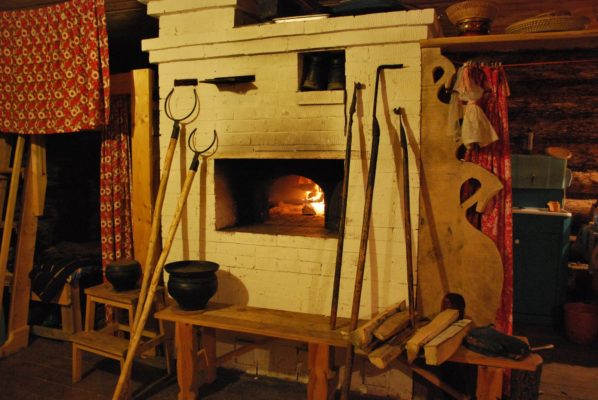
The poker was necessary for moving firewood and coals in the furnace. It was made from fire-resistant metal, usually to order from a blacksmith. Also, some housewives used a wooden burner, which was used to mix ash, and sometimes used it as a torch to illuminate the hut.
The chapelnik was a metal hook with a wooden handle. It was used to grab the frying pan. In Rus' it was called chapel, hence the name of the hook.
The chapelnik is one of the few household items that did not die, but was reborn in the modern kitchen industry. Some manufacturers create collections of frying pans and pots that only require one removable handle. In a modern home, this helps to significantly save space.
A sledge or grip was used to send a cast iron pot with food into the oven. Housewives usually had several horns: small, medium and large - for dishes of any size. The grip had a wooden handle and a metal base. With a certain skill, some owners made their own grips without the help of blacksmiths.
Gardener
A wide and flat shovel made from a single piece of wood. With the help of the gardener, the housewives took out a pie or bread and sent it to the oven.
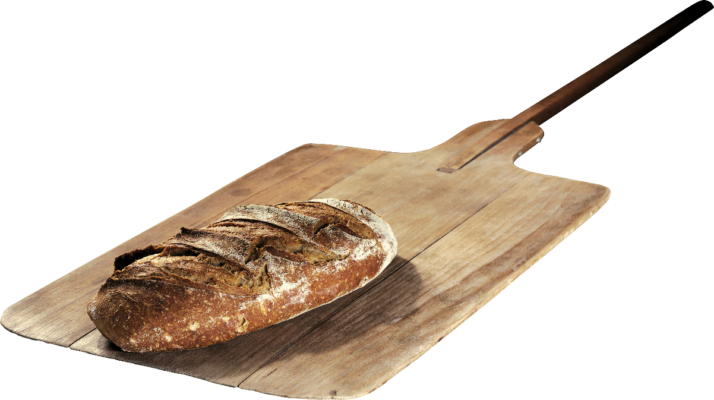
Aspen, linden or alder were suitable for its manufacture. When the master found a tree of the required size, he split it into two parts. Each piece was then carved into a long board. The gardener's outline was drawn on it and smoothed, trying to remove all the nicks. After cutting out the item, it was cleaned again.
This type of kitchen utensil can now be found in Italian cafes, where chefs use it to take pizza out of the oven.
Millstone
The peasants knew: bread is the head of everything. Therefore, they approached the cultivation and harvesting of grain crops responsibly. The peasants ground the collected grain into flour, and usually used hand millstones for this. The device consisted of two tightly fitting stone circles. In the top there was a small hole for pouring grain and a handle that rotated the millstone.
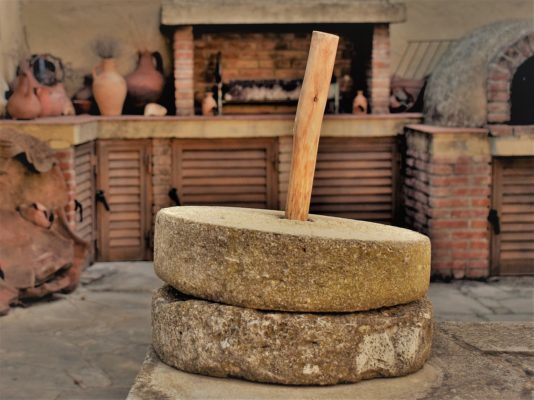
Millstones were made from stone, less often from wood with the inclusion of metal elements. Millstones can also be found in remote villages. But now I use them more often for grinding seeds and nuts, rather than for making flour.
Accessories for home and garden
Pomelo
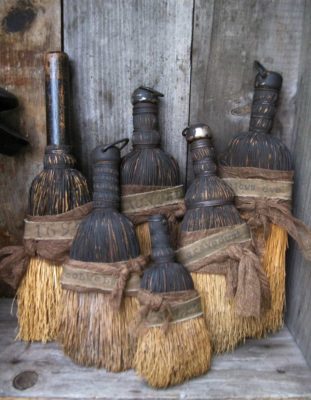
Unlike an ordinary broom, the broom was used only for cleaning near the stove and for cleaning it from ash.Outwardly, it looks like a broom: a long handle to which juniper branches, brushwood, rags or sponge were tied.
In Slavic folklore, the pomelo was an attribute of witches or Baba Yaga. Many proverbs and sayings were associated with him.
Trough and ruble
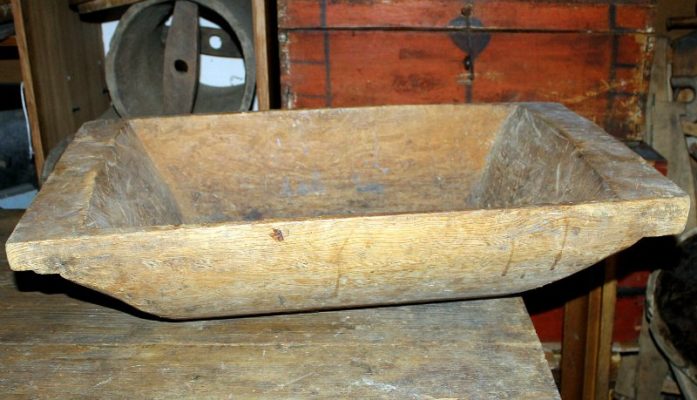
They were necessary for washing and ironing clothes. The trough was used for washing, feeding livestock, and dough or pickles were prepared in it. This word comes from “bark,” from which the first troughs were made. Later they were made from halves of the deck, hollowing out a recess in the center.
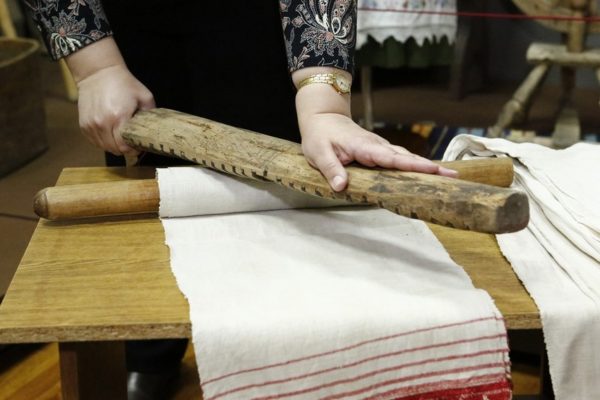
Washed linen was ironed (rolled) using a ruble. It consisted of a rectangular board with notches and a rolling pin. The fabric was wound around a rolling pin and rolled across the table using a ruble. At the same time, the linen fabric softened and smoothed out.
Rocker
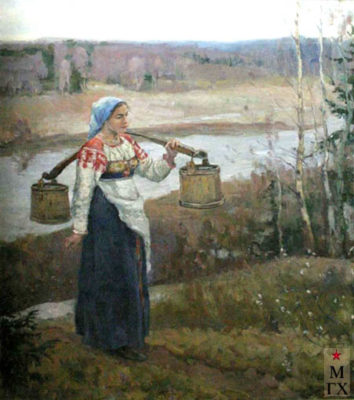
Everyone has seen this household item. The rocker is a curved stick with hooks at the ends. Willow, linden, and aspen were suitable for its manufacture. Buckets of water were carried on the yoke. By the way, carrying water on a rocker is not as easy as it might seem. Firstly, this purely female work is physically difficult. Secondly, so that the water from the buckets does not splash, the woman had to walk with a special, smooth gait.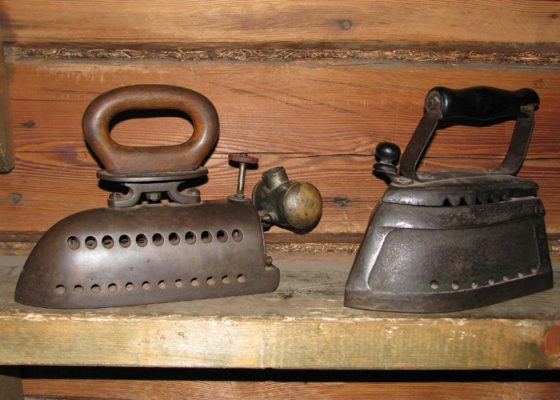
Progress has moved at all times, so the ruble was replaced by a cast iron iron. It came into wide use much later due to its high cost. The iron was heated on a stove or hot coals were poured inside. Cast iron irons weighed a lot: from 5 to 12 kg. Ironing with them was difficult and inconvenient compared to the ruble, but it could iron “shaped” linen, while the ruble could only handle straight linen.
spinning wheel
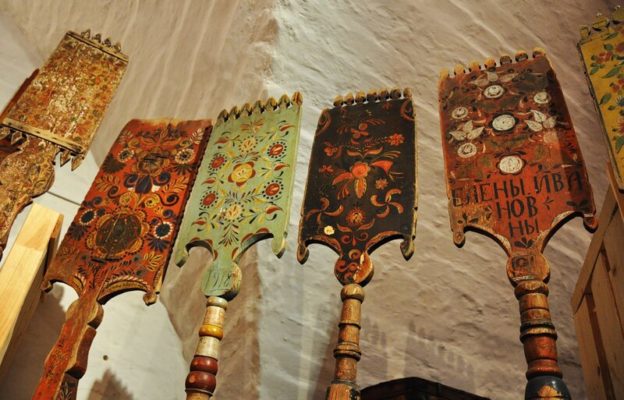
An important attribute in the home of every Russian housewife. Women received a spinning wheel as a gift from their fathers, brothers or grooms.This household item was valued and treated with care. The blades and bottoms of the spinning wheels were decorated with paintings - in each locality in its own way. The spinner's work was monotonous and long; she often stayed at work until well after midnight. Spinning threads progressed slowly, so girls began to master this process and prepare their dowry from an early age.
Box
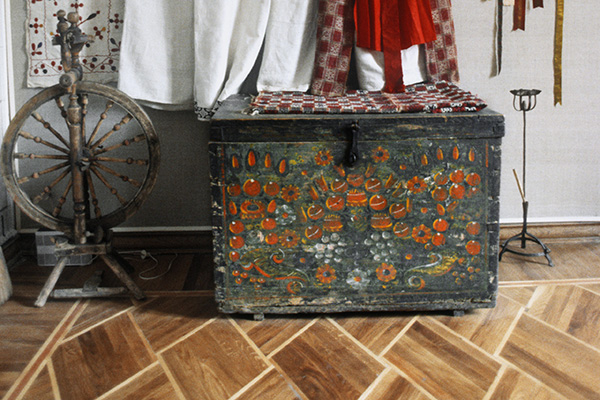
Wardrobes appeared in houses much later, and initially chests were used to store things. The girl's dowry was placed in the chest; it was also painted and decorated with carvings. The chest could be a full-fledged decoration of the house. It was believed: the more chests in the house, the more prosperous the family.
Sickle

It is a metal arc with a wooden handle. The sickle must be very sharp. With its help, the peasants harvested their crops.
The first types of sickles had a silicon tip. And the type of sickle to which we are accustomed appeared only in the 18th century.
Many household items seem ridiculous now. But our ancestors used them to run their households, engage in farming and cattle breeding. Most of the household items of ordinary peasants can now be found only in museums, but in some villages the older generation still uses grabs, pokers, and stores things in chests. And in many houses you can see preserved spinning wheels.




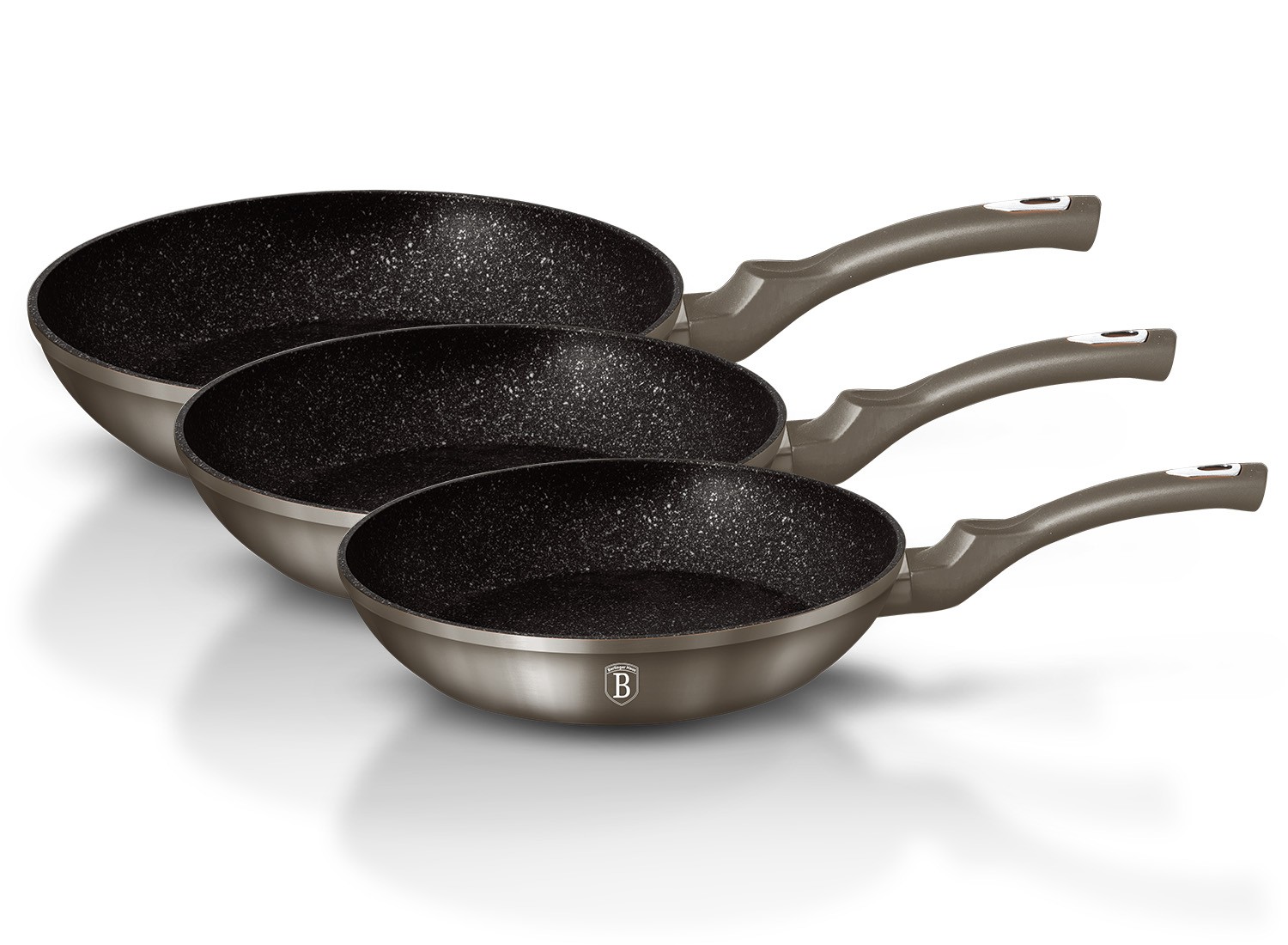

I think the title is incorrect. There are still quite a few villages with a similar way of life. The trend is towards a comeback, especially for commercial purposes. A sickle and an iron are not kitchen utensils.